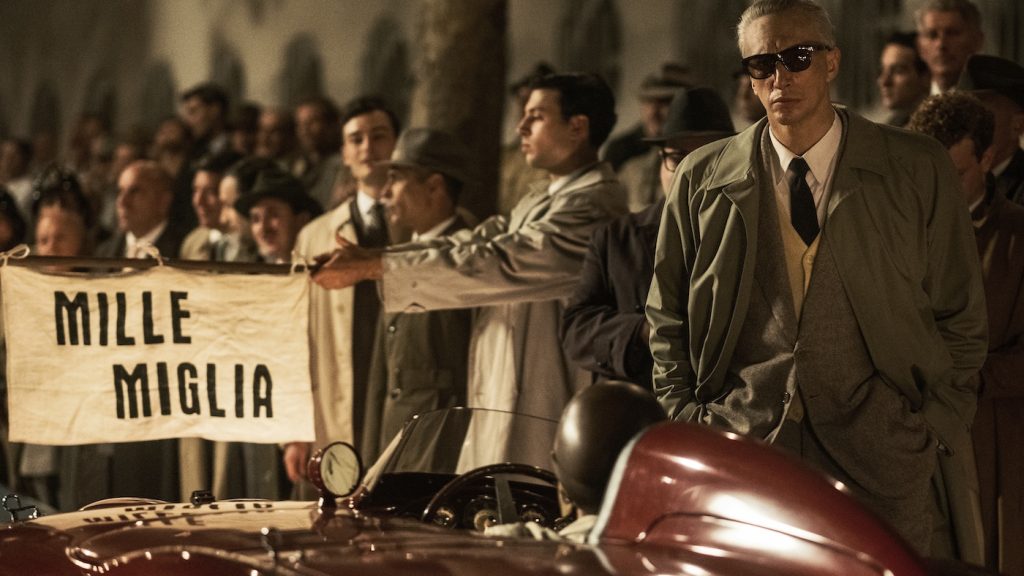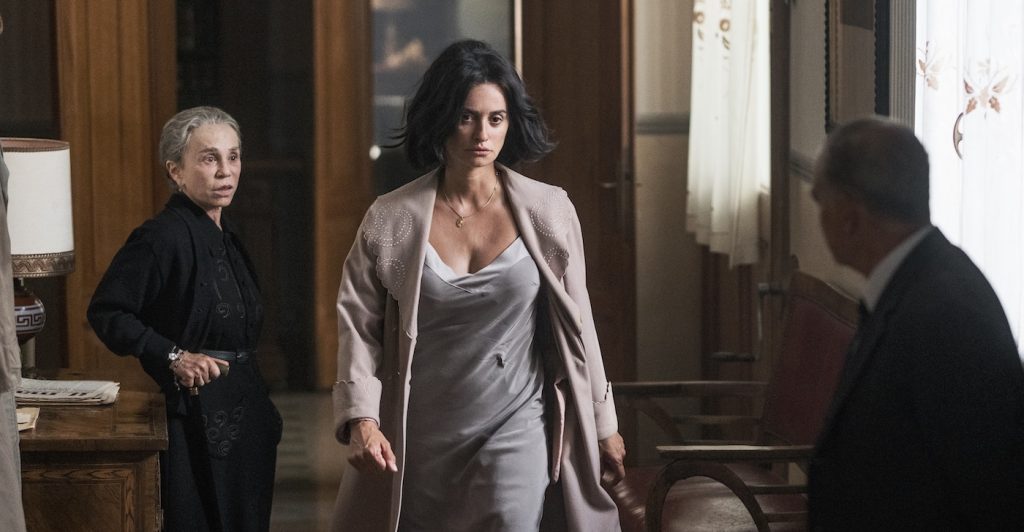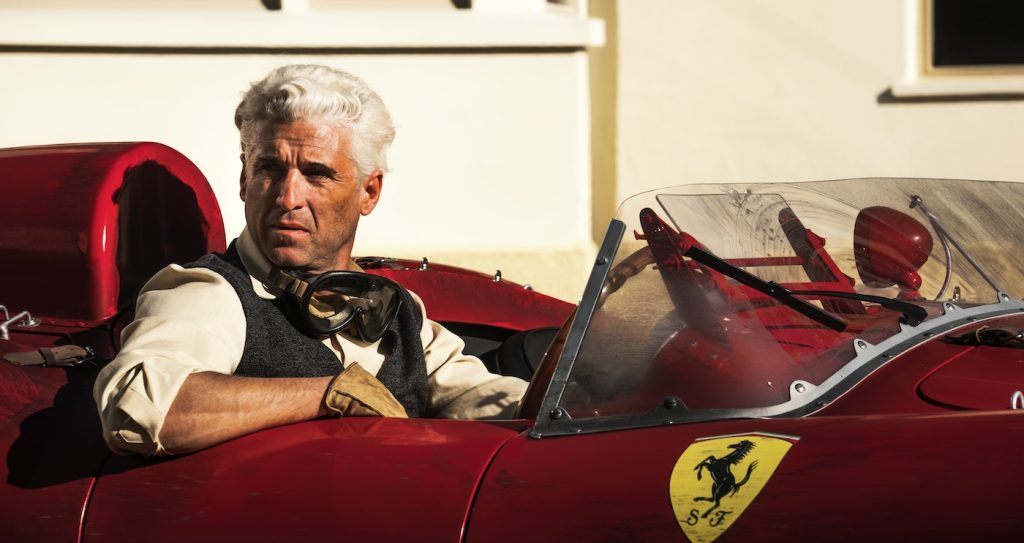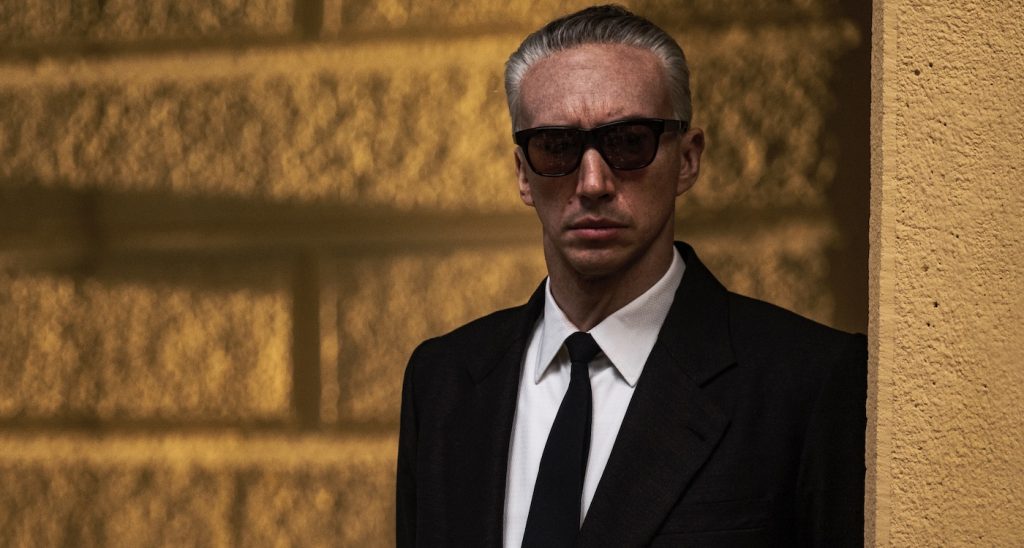“Ferrari” Production Designer Maria Djurkovic on Building Enzo Ferrari’s World in Michael Mann’s Racing Epic
Ferrari raced into theaters this past Christmas, and the bright red color of the iconic racing cars featured in the film seemed perfectly timed for its holiday release. Based on the 1991 nonfiction book “Enzo Ferrari: The Man, The Car, The Races, The Machine,” and helmed by celebrated four-time Oscar nominee Michael Mann, Ferrari centers on the summer of 1957, a very difficult time for Enzo Ferrari (Adam Driver). He was facing potential bankruptcy, grieving the recent death of his son Dino from muscular dystrophy, and had marital strife that might have made the Gucci family blush. His wife Laura (Penélope Cruz) had just discovered the existence of his son Piero, the result of Enzo’s longtime relationship with Lina Lardi (Shailene Woodley). Meanwhile, he has to set all of this aside to focus on his cars winning an incredibly dangerous 1,000 mile race known as the Mille Miglia in order to save his business. Those who know 50s racing will recognize this particular race’s importance to history, a brutalizing race of endurance and skill that asked its drivers to accept the possibility of a gruesome death. More casual viewers will learn just how much the 1957 Mille Miglia impacted Enzo Ferrari’s life and future.
The Credits spoke to Ferrari production designer Maria Djurkovic about her work on the film. She discusses her collaborations with Michael Mann and DP Erik Messerschmidt, recreating real-life exteriors and interiors from 1957, and how they chose to leverage that dramatic, unmistakable Ferrari red.
You did a huge amount of research early in the production. In terms of pictures, what were some of the cornerstones or visual inspirations?
You need to see one of my art departments to understand how obsessive-compulsive my research is. It’s all about a complete collection of images. There is so much visual archival information available covering the races, the Mille Miglia, the pitstops, and the locations of the race. I think I probably got the job because I’m as obsessive-compulsive as Michael is. One of the things we have to be really careful of when doing a period film like this is clearance because there’s so much advertising involved, certainly around all the racing. If you’re absolutely true to the event, you will be cleared to use anything, whether it’s the Esso or Pirelli tires logo or whatever might be there. You’re cleared if you are completely accurate. However, not every image is, so it was like being a detective. If two images are of a particular race and both say it’s 1957 but are different, it takes a lot of research to determine what is actually true to the time.

And what about elements that made it into the film?
In terms of inspiration or things to look for, there are some very striking images, like when they’re signing up for the Mille Miglia in Brescia, in the town square. They’re images of Ferrari standing on that particular Mussolini-built balcony. It’s a fantastic bit of Italian Fascist architecture. That was a really key image for Michael because he wanted to be able to shoot from the same angle as that particular image. There’s an image of the English driver Peter Collins, who Jack O’Connell plays, and he’s wearing this particularly fantastic woolly hat. They copied that, and it’s in the movie. We had to be a little bit more abstract about the home environments, but there were certain things that Michael was very specific about because he visited Piero Ferrari’s home, the little boy in the movie. They are friends, and he visited his home. The exterior of the Ferrari house is actually the real Ferrari house where he lived. There’s a rather amazing silk wall covering that we printed and hung over the walls in Laura Ferrari’s bedroom which Michael had photographed that was and still is in the house. He wanted to replicate it because, for him, it was absolutely key to representing Laura’s state of mind.

How did the collecting of photos help in your collaboration with DP Erik Messerschmidt and other department heads in terms of articulating the aesthetic Michael Mann was after?
I loved working with Eric. There was an alchemy between the various heads of departments that worked incredibly well on this film, and I find it really interesting, not just on this movie, but on any movie, how the world we build on the walls is what you quite often see in the film. It’s a really good way of communicating clearly with the director, the DP, the costume designer, and the rest of the team. You can talk all day about aesthetics, but it’s actually images that do the job better than anything else. Whenever Michael wasn’t ready for a meeting with the cast, he’d send them down to the art department because there was plenty to look at. I think there’s something very lovely about being able to see the world you’re going to be creating long before the first bit of scenery has been painted or built. It’s a kind of language that you can share with everybody.

The color palette of Ferrari is a very interesting mix of rustic Italian colors, a sort of monochrome, and that bright pop of red the cars create, cutting through the landscape.
The red is a gift, isn’t it? And for that personal side of the story, Michael wanted to find our version of monochrome, and Modena is extraordinary. It’s terracotta, ochre, and rich oranges everywhere. It’s got such a character. In Italy, you can travel an hour in one direction or the other and see something completely different because, historically, they were separate principalities, and they all have their own distinct character. Michael had been there quite a few times before we started this process, but my first day of prep was my first day in Modena. The look informs you from the moment you drive into it, and it’s unquestionable what the color palette of the film would be. It became our form of a monochrome, in contrast to that dramatic Ferrari red.

What was involved in recreating the Ferrari factory of the film?
We found loads of photos taken at the original place, and there’s this cleanness, this almost Bauhaus aesthetic, and that was such an important thing for Michael. He would never want us to do something that is aesthetically motivated. It always has to be motivated by character. I had no idea how we were going to achieve the sort of beautiful, clean lines that the actual original factory buildings had because we had very little time. There’s the very iconic gate that we were not going to find, and I accepted that. The courtyard of the factory was cobbled, which I really liked against the clean lines of all the facades. The location managers found this dairy factory built in the 60s. It was the wrong period, but had the shape that felt right, and it had the right cobblestones. The rest was either built in its entirety, like the whole of the Ferrari gateway, or we refaced it to be accurate. It was a red brick building, for example, and we faced it with wood and plaster and made it that creamy yellow color.
What keeps you moving forward and loving your job, project after project?
All the research, for me, is one of the keys to why I still really like doing my job. It’s never boring because you delve into a world that you’ve never thought about, whatever it is. I always tell kids who want to do the job that I do that they just have to be a visual sponge. If you’re not working, go to exhibitions and go to museums, that’s what’s going to keep you fresh, so you’re not just looking at a bunch of research and replicating it. It’s about having an understanding of history, and having an understanding of the world in which the film is set, and then working to say something with all those environments about the characters. That’s all at the same time as creating an aesthetic for the whole piece and finding a balance that makes it all work together.
Ferrari is in theaters now.
For more on Ferrari, check out these stories:
Searching for That Ferocious “Ferrari” Sound With Supervising Sound Editor Tony Lamberti
Michael Mann’s “Ferrari” Starring Adam Driver Revs Into High Gear in First Trailer
Featured image: Adam Driver as Enzo Ferrari yellow Photo Credit: Lorenzo Sisti.



